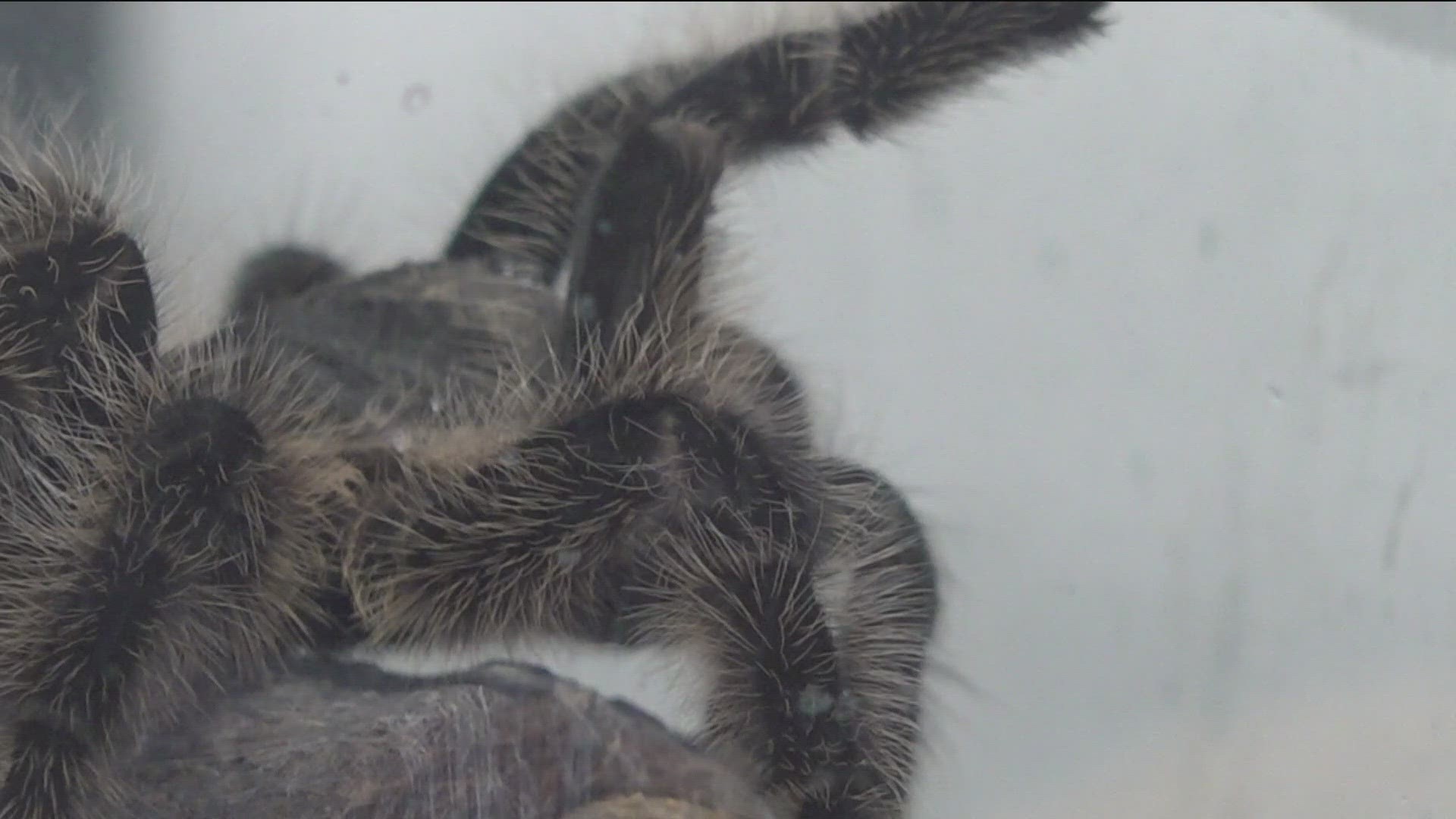SAN DIEGO — Fuzzy, crawly, and possibly in your direct line of sight: Thousands of tarantulas will emerge from hiding in search of love across San Diego County.
Two specific species of tarantulas that are native to San Diego typically begin their prowl for a mate between August and September.
The two most common types of tarantula you'll likely encounter across San Diego County are the California Black Tarantula and the San Diego Bronze Tarantula.
Though the two species could be kept as pets and are generally docile, both can bite and produce venom if threatened.
"Handling the California Black Tarantula is discouraged since its barbed hairs can be very irritating and hard to dislodge once they have pierced the skin," according to the San Diego Natural History Museum.


If you find yourself toe-to-eyes with the hairy arachnoid, cut them slack.
It's most likely a male tarantula on the hunt for its mate in its final year or two of its life - and that's not because occasionally they are consumed by their female counterparts after mating; it's because they only live about five to seven years after reaching sexual maturity, according to the San Diego Zoo Wildlife Alliance.
Talk about love making you do some crazy things, yikes!
On the other hand, female tarantulas happily live and produce eggs for about 25 years or more.
"The female makes a silk cocoon in her home for her eggs. Once the eggs are laid (from 75 to 1,000!), she seals up the cocoon with silk and then stands guard for 6 to 9 weeks until the young hatch. They go off independently when they are two to three weeks old," the San Diego Zoo detailed.
But don't be alarmed! Most tarantulas are busy minding their own business. If you don't bother them, they won't bother you.
WATCH RELATED: Tarantula's on the prowl during mating season in Powa

